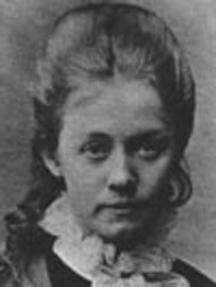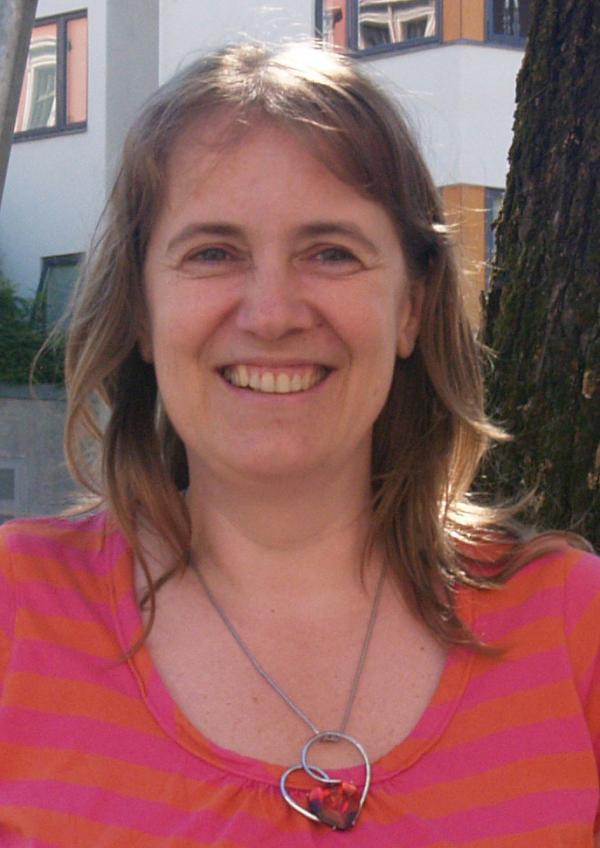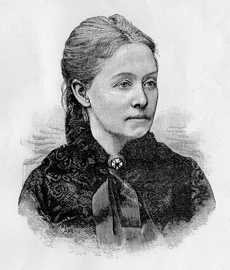
In 1870 two Norwegian sisters, Harriet and Agathe Backer, go to Florence. Agathe, who has taken lessons with the Prussian royal family’s piano teacher, is hoping that the famous Hans von Bülow will agree to become her teacher. However, Bülow isn’t interested in hearing her play: “She was too blond and presumably she played blond too”. At a free concert at one of their mutual acquaintances Bülow still gets to hear Agathe play, and he decides that she is worthy of his time despite the colour of her hair.
Outshone by the stars?
– In Norwegian music history Backer Grøndahl has been eclipsed by Edvard Grieg, but this wasn’t always the case, says musicologist Camilla Hambro. In June she defended her dissertation Det ulmer under overflaten (Smouldering under the surface).
– In a book on music history from 1878 Backer Grøndahl receives the same attention as Grieg. But as early as in Norges Musikkhistorie (Norway’s Music History) from 1921 she is described as a “violet of the night sky” that is outshone by the stars. Suddenly she is a woman with a capital W, while Grieg, who was far from macho, becomes a man with a capital M, Hambro points out. She explains that there still exists a fear of making Grieg sound too feminine. – By making Backer Grøndahl more feminine Grieg becomes more masculine, the researcher says.
The fact is that Grieg and Backer Grøndahl were close friends. Grieg had great respect for her as a pianist and a composer and he helped her in her career. They also performed together a number of times.
A balancing act
Playing the piano was a very common pastime for young women of the bourgeoisie who were waiting to get married. It was considered appropriate and important to know how to play, and performing was a good way of getting noticed as a potential wife. The young women could put their emotions and flirting into the music; things they couldn’t express with words. However, they couldn’t go too far: They had to be seductive, but not too sexual, they had to play well, but not too well, and they couldn’t appear to be too mannish or put too much emotion into their performance.

Backer Grøndahl’s performances were of course in a different league than most women’s, but she too had to adhere to the rules of her gender.
– When critics wrote that she played like a man they meant it as a compliment. But sometimes they said that her playing was mannish – this was not a positive comment, says Hambro. Backer Grøndahl was well aware of how important it was to appear as a good woman. In an interview with George Bernard Shaw in 1889 she emphasises that it is as a wife and mother she gets the experience that makes her an artist.
– Backer Grøndahl was a good chess player, also in the game of life. She was good at marketing and knew what she could and could not say. She wasn’t willing to fall out with the right circles. She knew her audience – which consisted of more women than men – and it was mostly young women who bought her music sheets in order to play them at home, says Hambro. These young women would probably not want to or be allowed to play her music if Backer Grøndahl had fronted the feminist cause.
A tribute to "a nasty woman in Kristiania who hits the men with a horsewhip!"
Perhaps it is due to this balancing act that earlier literature has claimed that Backer Grøndahl wasn’t active in the women’s rights movement. Although, when Hambro started looking, it wasn’t difficult to find evidence to the contrary.
– It was only privately that Backer Grøndahl spoke of the negative aspects of being a female pianist and composer. But she managed to stay friends with the feminists too, the researcher says. As a child Agathe went to school with Gina Krog, while her sister Harriet was class mates with Ragna Nielsen, both famous feminists. In her older days Backer Grøndahl was a member of the Women’s Suffrage Association.
– And it is telling that she wrote a cantata for Aasta Hansteen, says Hambro. The musical work Nyttaarsgry (New year’s dawn) was a tribute to this feminist pioneer who wasn’t afraid of offending the bourgeoisie. Hansteen felt that the same moral codes should apply to men and women, she regarded men as inferior creatures, and she sometimes used a horsewhip to punish them for personal offences and for centuries of female oppression.
– In other words, you have to look at what Backer Grøndahl did, not just at what she said in public, to see that she was a supporter of women’s rights, Hambro points out. Backer Grøndahl conducted the premiere of Nyttaarsgry at a large Nordic women’s rights meeting in Kristiania in the summer of 1902, and she had several musical works published in the feminist periodical Nylænde. Gina Krog wrote her obituary in the same periodical.
Family life

Agathe was married to the singer Olam Grøndahl, and for a while they gave concerts together.
– But she received better reviews than him and they stopped performing together. Olam started conducting choirs and teaching, and was of great importance to Norway’s choir and school music, the researcher explains. Whether the critics’ difference in treatment caused problems for their marriage is uncertain, but when the Norwegian newspaper Aftenposten wrote that the missus made more money than Mr Grøndahl Olam had to make a public statement to put things right.
Another problem Agathe Backer Grøndahl faced as a female pianist was that she couldn’t perform when she was visibly pregnant. During her career she had to take four breaks from her performances. – During those periods it was said that she suffered from “health problems”, the researcher says.
Hambro believes that notions of Norwegianness and genius have contributed to limiting women’s place in music history. That women could play wasn’t so controversial, but the problem was bigger when it came to composing. In those days it was surprising that such piano music could be composed by “one so fair and feminine in appearance and manner”. In the 1800s genius was regarded as a male quality and notions of Norwegianness seem to have had similar connotations. In order to be a representative of the nation-building of the 19th century it was perhaps necessary to be a man?
Musicology’s gender blindness
Hambro says that to avoid reproducing old music history in new books one has to go digging in the archives.
– There is too little new research on Norwegian music history, and even less on female musicians and composers. Musicology has gone straight from pre to post feminism, says Hambro. In her opinion musicology has lacked the feminist perspective that we find elsewhere in the humanities and social sciences.
– I also believe that we need a debate on the place of women in music history. Have we lost something since the time when women like Backer Grøndahl gave concerts and wrote music, and do we need a new analysis of these works, she asks. Hambro is very pleased that she could do her doctoral studies at the Department of Culture, Aesthetics and Media at the University of Gothenburg, because here musicology and gender studies belong to the same faculty.
– It would have been difficult to write this dissertation at a Norwegian university. In Norway there is little research on feminist musicology. Only last year the faculty in Oslo hired a professor II with competence within this field, says Hambro.
Her own work on Backer Grøndahl represents the kind of innovative work that she wants to see more of in musicology. She has looked at Backer Grøndahl’s music as performable texts and has for instance adapted the method of media scholar John Fiske, which is a new way of analysing Norwegian music from this period.
– I interpreted the musical compositions through the music reviews of the time. I think music should be understood not just through the music sheets or through Backer Grøndahl’s intentions and interpretations, but also through the context and usage of those who played and listened to the music. I have gathered a lot of reviews from national and foreign newspapers and periodicals and I think this material shows how important gender was to the composition and performance. This way I found out how Backer Grøndahl’s music was received in her own time. You don’t need to be a feminist to employ this method and the material is available in archives. Some of it is now even available on the Internet, Hambro says.
Backer Grøndahl on your iPod?
By using this method she has not only discovered that Backer Grøndahl supported the women’s rights movement, she has also rediscovered the manuscript of her work Andante quasi Allegretto, which has been missing since 1947.
– It turns out that since 1959 it has been in the archives of the Norwegian Music Collection at the National Library in Oslo. It wasn’t difficult to find at all, Hambro smiles. She has had the andante recorded by Natalia Strelchenko and Minsk Chamber Orchestra and they are now working to release all of Backer Grøndahl’s piano pieces on cd on ARENA Records. Three cds are already released and two more are on their way. Later, the songs too will be recorded..
– This is probably the first time a record company will release the complete works of a female composer on cd! I’m glad my thesis has spawned this by-product, Camilla Hambro concludes.
Hambro, Camilla: Det ulmer under overflaten. Agathe Backer Grøndahl (1847–1907). Genus, sjanger og norskhet. Avhandling for filosofie doktorsexamen i musikkvitenskap. (Smouldering under the surface. Agathe Backer Grøndahl (1847-1907). Gender, genre and Norwegianness. Doctoral thesis in musicology.) Department of Culture, Aesthetics and Media, University of Gothenburg.
A Norwegian pianist and composer with great success both in Norway and abroad. A close friend of Edvard Grieg and the painter Harriet Backer’s sister.
